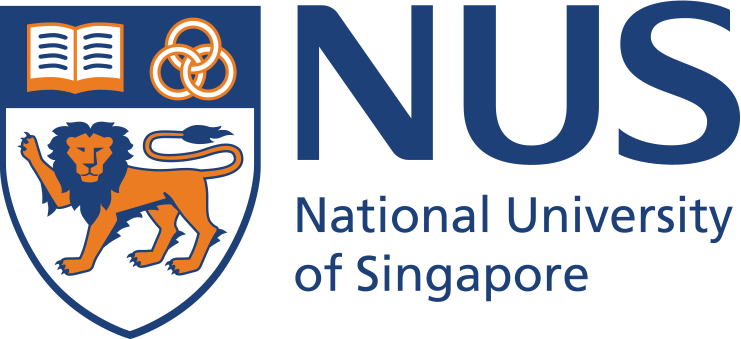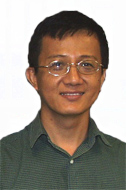Biography
K.K. Ang is an Associate Professor in the Department of Civil and Environmental Engineering at the National University of Singapore. He received his B.Eng degree from the University of Singapore, M.Eng from the National University of Singapore and PhD from the University of New South Wales, Australia. He has been a staff member of the Department of Civil Engineering at the National University of Singapore since March 1987.
Professor Ang is actively involved in the use of IT for enhanced teaching and learning, and is presently the Director of the Centre for IT and Applications (CITA Engineering) at the Faculty of Engineering. He was the first recipient of the inaugural NUS Teaching Excellence Award for Use of IT in Teaching and the Faculty Teaching Excellence Award for Innovative Teaching in 1998. He also received the Department of Civil Engineering Teaching Commendation Awards in 1997/98 and 1998/99.
Professor Ang has taught courses in Computing, Structural Mechanics, Structural Steel Design, Structural Analysis and Finite Element Methods. His research interests include structural stability and vibration, shape and vibration control of smart adaptive structures, analysis and design of very large floating structures, computational mechanics, finite element method and meshless methods, and have published about 60 technical papers in these areas in various international journals and conferences. He won the IES/IStructE Best Structural Paper Award in 1994 for his work on development of buckling formulas and design charts for straight members and plates.
Professor Ang has been involved in the organizations of various international conferences. He was the Honorary Secretary of the 4th Asia-Pacific Conference on Computational Mechanics held in Singapore in December 1999 and is currently the Honorary Secretary of the 2nd International Conference on Structural Stability and Dynamics to be held in Singapore in December 2002.
Professor Ang is a Singapore registered professional engineer since 1991 and has been involved in consulting jobs for the local industries. He is also a member of the Institution of Engineers, Singapore, and is currently serving as an elected council member of the Singapore Structural Steel Society. His hobbies are playing with computers, traveling and watching movies.
Qualifications
- BEng (1st Class), University of Singapore, Singapore, 1977
- MEng, National University of Singapore, Singapore, 1980
- PhD, The University of New South Wales, Australia, 1987
- PEng, Professional Engineers Board, Singapore, 1991
Honours & Awards
- National Day Long Service Medal, 9 Aug 2007
- NUS Quality Service Award, 2003
- NUS Teaching Excellence Award (Use of IT in Teaching) 1997/1998 for outstanding contributions to the educational programs at NUS through innovative use of IT in teaching and learning.
- Inaugural Faculty Innovative Teaching Excellence Award for 1997/1998 for outstanding innovative teaching, based on the students nomination and peer review.
- Teaching Commendation Award 1997/1998,1998/1999, 2001/2002, 2004/2005, 2007/2008
- Faculty Innovative Teaching Award (Silver) 2001/2002 in recognition of innovative contribution in e-education.
- Engineering Educator Award 2002/2003.
Professional Activities
- Member, Singapore Structural Steel Society
- Board of Directors, International Society for Computing in Civil and Building Engineering
Teaching Areas
- Computing
- Structural Mechanics
- Structural Analysis
- Structural Steel Design
- Finite Element Method
Publication
- KULATHUNGA, T, K K Ang* and J N Reddy, “Molecular dynamics analysis on buckling of defective carbon nanotubes”. Journal of Physics Condensed Matter, (2010). (United Kingdom)
- MA, Y and K K Ang*, “Solid shell element based on relative displacement concept”. Journal of Engineering Mechanics ASCE, 134, no. 11 (2008): 952 960. (United States).
- KULATHUNGA, T, K K Ang* and J N Reddy, “Accurate modeling of buckling of single and double walled carbon nanotubes based on shell theories”. Journal of Physics Condensed Matter, 21, no. 43 (2009): 435301. (United Kingdom)
- LUONG*, V H, K K Ang and C M Wang, “Vibration analysis of axisymmetric multi layer liquid filled cylindrical containers using RD finite element method”. International Journal of Offshore and Polar Engineering, 18, no. 1 (2008): 43 49. (United States)
- Ahmed K. S., Ang K. K., A Pull-out Model for Perfectly Bonded Carbon Nanotube in Polymer Composite, 2012. Journal of Mechanics of Material and Structures
- Ang*, K K and K S Ahmed, “An improved shear-lag model for carbon nanotube reinforced polymer composites”. Composites Part B-Engineering, 50 (2013): 7-14. (United Kingdom).
- Ang*, K K and J DAI, “Response analysis of high-speed rail system accounting for abrupt change of foundation stiffness”. Journal of Sound and Vibration, 332, no. 12 (2013): 2954-2970. (United States).
- TRAN, M T, K K Ang*, V H LUONG and J DAI, “High-speed trains subject to abrupt braking”. Vehicle System Dynamics, 54, no. 12 (2016): 1715-1735. (United States).
- Ang*, K K and K S Ahmed, “An improved shear-lag model for carbon nanotube reinforced polymer composites”. Composites Part B-Engineering, 50 (2013): 7-14. (United Kingdom).
- BAI*, W, M.A. Hannan and K K Ang, “Numerical simulation of fully nonlinear wave interaction with submerged structures: fixed or subjected to constrained motion”. Journal of Fluids and Structures, 49 (2014): 534-553. (United Kingdom).


